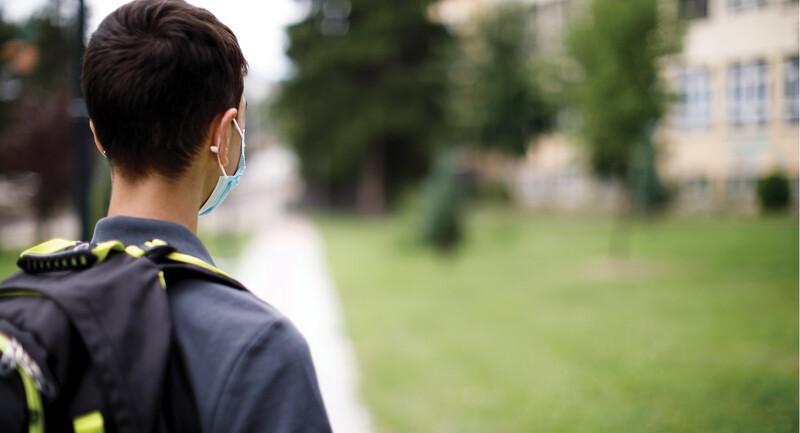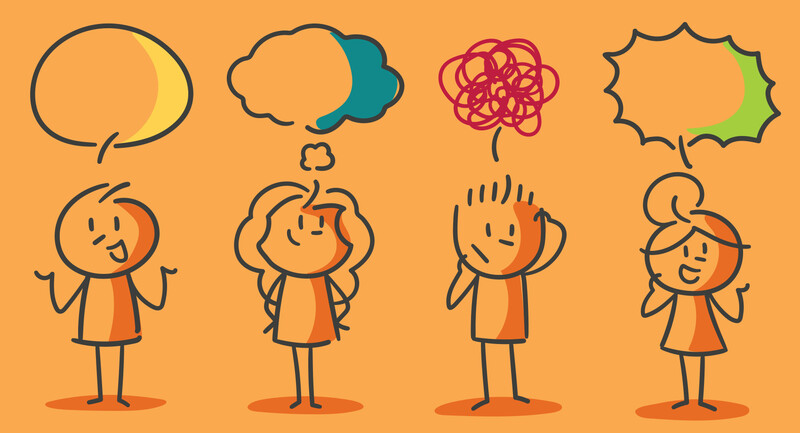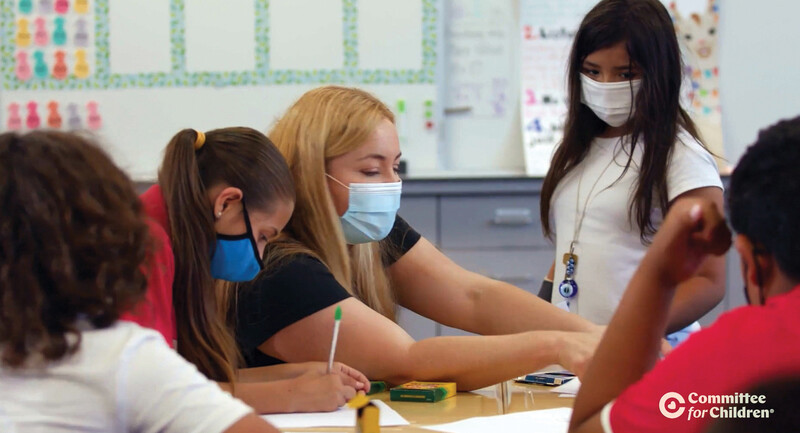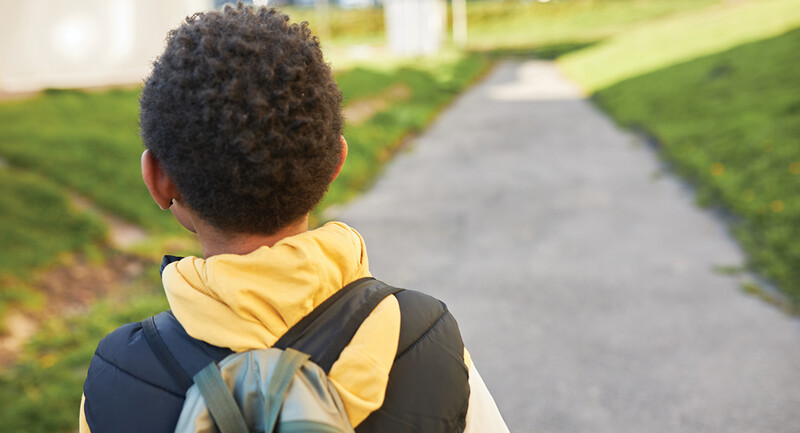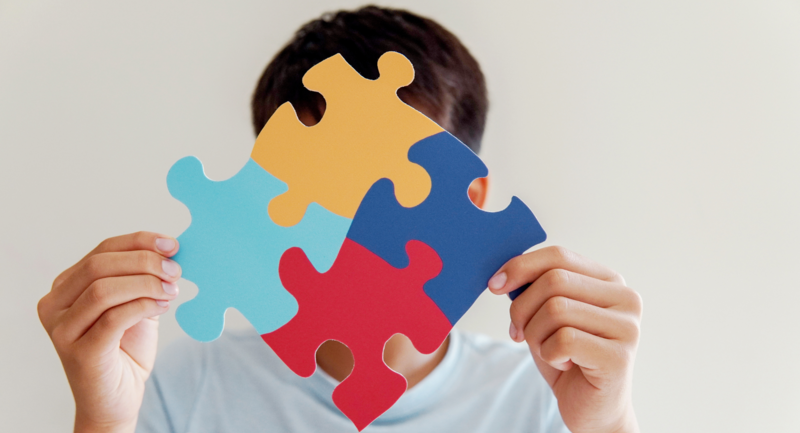As our schools continue to transition from pandemic-induced disruption to a new normal, educators must realize that our most vulnerable students are the ones who've been harmed the most.
Emerging research shows that, as with other disasters, most children and adolescents are exhibiting resilience in the face of this ongoing traumatic event. However, because of the large scale of this disaster, many children are living in households that experienced traumatic events—the loss of loved ones, jobs, housing, and stability, not to mention children's loss of learning and peer socialization. At the very least, many students experienced the pandemic as a period during which they were intensely bored, missing their friends, and academically unmotivated (Korzinski, 2020). So the number of students who will need school-based mental health care, or at least extra attention, this fall will be high.
I suspect that when schools reopened for the 2021–22 academic year, most children appeared to be OK. They returned with smiling faces, played with new friends, and responded to their teacher's requests. But those who were struggling to cope with the trauma and destabilization the pandemic created in their lives soon began to "act out." These children are letting us know they're not OK. As I often say to educators, behavior is the language of trauma; students will show you before they tell you that they are in distress.
Respond to "Acting-Out" with Support
The problem is, because trauma and mental health distress aren't immediately visible, we won't know which students are in a quiet state of psychological desperation. Therefore, it is best to respond to all acting-out behaviors with expressions of support that leave the door open to identifying any underlying issues. I call this responding with universal mental health precautions. Here's what that looks like:
Display nonconfrontational body language, such as holding your arms at your sides with your hands relaxed and not "towering over" a student. It helps to sit on the edge of a desk or kneel, depending on the student's height.
Keep your voice at a normal or slightly lower than normal volume. Stating your directives with a slow, deep, warm voice can reduce a student's anxiety and perception of threat.
Express your desire to meet the student's needs. Say that you want to understand why he is upset, hurt, angry, or sad so you can help resolve the problem.
Listen first. Ensure the student knows she's been heard by restating your understanding of her perspective or needs.
Whenever possible, facilitate the student's sense of safety, agency, and control by providing two non-punitive choices that let her display behaviors that meet your expectations.
Tell the student you value him as a member of the classroom community. Ensure that he feels belonging rather than shame.
When such actions become your habitual response each time students act out, you are providing them with developmental experiences that help them self-regulate.
Keep Students in the General Education Classroom
Remote schooling has painfully demonstrated the critical role that in-person schooling plays in simultaneously meeting many developmental needs. Besides academic learning, in-person schooling provides children with socialization and support from caring adults, peers with whom they can test out various identities as they discover themselves, and access to skilled physical and mental health practitioners. And for too many children, school is where they experience sanctuary from unsafe homes and communities, get reliable meals, and have access to other social services.
The loss of these supports last year, possibly on top of traumatic events at home, means many students will begin this academic year displaying symptoms that could meet the criteria for a range of mental health disorders. It will be tempting to manage the challenges their behaviors create by isolating these kids through extended time outs, separating their desks from the rest of the class, or even removing them from the general education classroom. However, we must resist the pressure to use exclusion and the special education system to manage behavior and learning challenges associated with adversity and poverty.
Four months into the 2020–21 academic year, I met with a group of school psychologists, counselors, and social workers. They expressed alarm at the pushback they were getting from classroom teachers and administrators when they declined to attach behavioral- or learning-disorder labels to students who'd been referred for assessment. These mental health practitioners resisted because it was clear to them that students' challenges were the direct result of how their families had been affected by the pandemic and remote learning.
Special education isn't set up to respond to behavior and learning challenges arising from temporary situational factors. Once special education labels are attached to children, it can permanently alter how they are perceived by educators and the educational opportunities they have. Testing for the purpose of assigning students to remedial or special education classes will only serve the needs of vulnerable students if we do things differently than before the pandemic. If we're serious about using testing as a step in the process of mitigating COVID-19-induced inequalities, it must be coupled with policies for providing students who've fallen the furthest behind with accelerated learning opportunities provided by the strongest educators (Myers, 2021).
The National Association of School Psychologists has clear guidance on identifying children for learning disabilities after the resumption of in-person schooling (National Association of School Psychologists, 2020). Although this guidance focuses on learning disabilities, the principles it details also apply to behavioral disabilities. At the core of their guidance is the need to implement strong Tier 1 interventions for all students, coupled with supplemental interventions for students exhibiting learning delays. As the NASP notes, this fall it will be almost impossible to rule out situational factors, like lack of access to appropriate schooling, until children have had adequate time in a supportive learning environment.
I understand educators' anxieties about how behaviors stemming from mental health distress or trauma can disrupt their attempts to progress through the curriculum. I understand their worries about whether escalated behaviors will make their classrooms unsafe spaces. However, if the underlying cause of students' disruptive behaviors is mental health distress, punitive and exclusionary discipline will worsen both their mental health and their acting-out behaviors. Students need to feel safe with you. They're most likely to feel safe when they know they won't be shamed in front of peers if they make poor behavioral choices.
Accelerated Learning Tip
To create conditions that will enable accelerated learning, change the current anxiety-filled, short-sighted conversation about maximizing instructional time.
The Basics of Relational Discipline
Relational discipline is grounded in research showing that leveraging positive educator-student relationships is more effective than punishment in motivating students to adhere to classroom expectations (Marzano, Marzano, & Pickering, 2003). The strongest educator-student relationships are built on a foundation of understanding each student as an individual and genuinely caring for each one's well-being, although the relationship-building process won't look the same for every educator.
Figure 1 provides examples of relational discipline. Educators who effectively use relational discipline value strengthening student voice, developing social and emotional competencies, and preserving student dignity while correcting behaviors. (This last point is crucial; even one public shaming interaction with a student can have widespread damaging effects.) Relational discipline isn't just about incidences of misbehavior. Its principles permeate decision making around daily routines and procedures, instructional practices, and ensuring that academic content is culturally responsive.
Plan in advance—and practice—responses to challenging behaviors so you can maintain composure and safeguard student dignity in the moment. Here are some behavioral corrections that are not relationally damaging:
Make extended eye contact with a student exhibiting off-task behavior. This is a subtle, powerful way of alerting them to the fact that you see them and their behavior needs correcting.
Make eye contact, then use a physical sign, like a finger to the lips, to indicate the behavior that needs to change. This is most effective when you follow that gesture with another that indicates what you want them to do as a replacement behavior, such as return to their reading.
If a student isn't following instructions, provide a short reminder of what they should be doing—as privately and subtly as possible.
Remind the whole class of the expected appropriate behavior and give students time to self-correct. This will reach the individual student who needs a behavioral correction and prevent other students from beginning to engage in off-task behaviors.
Building and maintaining positive relationships with students, especially those coping with trauma, can be challenging. The same actions won't work for every student—or every educator—nor can teachers have equally strong relationships with all students. An educator may need to seek help from other staff who have stronger relationships with a given student. Students need a network of supportive, collaborative adults throughout the school.
Needed: Engaged Instructional Time
While relational discipline will strengthen classroom management, your classroom will be even more productive when you create a learning environment that prevents behavior challenges.
Many administrators and educators will want a quick return to classroom procedures and protocols that "maximize instructional time." However, past disasters have shown that staff and students need time and support to reestablish the school as a learning community. This will only occur through actively teaching self-regulation and social skills necessary for managing the interpersonal frustrations that are a natural part of being in a community.
I understand the panic over "learning loss." I see it as an educational justice issue; the racial disparities that have widened during the pandemic threaten to wipe out generations of hard earned educational and socioeconomic progress. But we must remember that much more than academic learning has been lost. Behavioral learning loss has also been unequally distributed. Some children live in homes that were able to create a school-like structured learning environment. Some have had months of unstructured time and will require considerable social and emotional supports to relearn classroom routines. Others have been completely absent from the learning environment and will need to incrementally rebuild the behavioral and cognitive stamina required for attending to academic instruction.
To give classroom teachers the time and space to create the conditions that will enable accelerated learning, we need to change the current anxiety-filled, short-sighted conversation about maximizing instructional time. Accountability pressures are causing too many to lose sight of the needs of the students receiving instruction. Indeed, we're in danger of forgetting one of the lessons educators learned during the pandemic: student engagement is everything.
Remote schooling freed students from teachers' ability to physically demand and direct their attention to the often disconnected, often unengaging academic content being taught in most classrooms. Many students expressed their disengagement by not showing up to the remote classroom or showing up as silent black boxes. As we return to in-person learning, we must not equate students' physical presence in the classroom with their engagement in learning.
Figure 2 illustrates how engaged instructional time is a smaller subset of the actual time students are instructed. During engaged instructional time, acting-out behaviors are minimized because students' attentions and energies are focused on academic learning they perceive as meaningful and relevant.
Getting Into the Zone
Educators and students co-construct the engagement zone in Figure 2. We know students are in this zone when we see signs of emotional, behavioral, and cognitive engagement, as Figure 3 details.
Emotional engagement is listed first in Figure 3 because when educators focus on students' needs for emotional engagement, they create the conditions for the behavioral and cognitive engagement that facilitates learning. When students are emotionally motivated to learn, the burden of behavioral self-regulation is minimized because they don't have to fight against boredom. They will find creative solutions to obstacles that arise.
The following principles (Pekrun & Linnenbrink-Garcia, 2014) can help you plan instruction that will engage students emotionally:
Topic emotions relate to students seeing themselves and their life experiences in the content, thus feeling a personal connection to what they're learning. They may feel excitement or curiosity—or, if they can't see anything related to their reality in the content, alienation, and boredom. To positively engage topic emotions in learners:
Learn about the life and cultural experiences of your students. Use that information to connect your academic lessons to who students are.
Provide opportunities for students to engage in assignments in ways that interest them and reveal more about who they are, such as writing something based on a tale from their culture.
Social emotions are important because students are more engaged when they feel connected to others in the learning process. This includes emotions like happiness, caring, or sympathy. To foster positive social emotions during learning:
Do frequent whole-class verbal check-ins about the learning process and the content using interactive strategies.
When you see a student struggling with an assignment, send a check-in note with words of encouragement and an offer of support ("I noticed you only completed two of the math problems during homework jumpstart. I'll stop by your desk tomorrow to help you work through a couple of problems.")
Achievement emotions, like pride, hope, and joy, relate to the sense of accomplishment that motivates students to keep learning. If a learner routinely experiences academic failure, negative emotions like shame and fear may lead them to avoidance.
Identify students who have yet to experience success or mastery on a lesson or assignment. Create opportunities for them to experience success in your classroom.
Offer ways for students to be affirmed for effort and persistence, not just completion and achievement.
Explore whether a student who seems disengaged from classroom activities is actually feeling fear or lacking self-confidence.
When educators focus on students' needs for emotional engagement, they create the conditions for the behavioral and cognitive engagement that facilitates learning.
Better for All
By using relational discipline and making instruction more engaging, we can ensure that all students—especially those still feeling the effects of trauma—have a successful return to school and learning. Instead of just returning to normal, we can "build back better."
Reflect & Discuss
➛ Keels says it's crucial now that each student senses they are a valued member of their class, even if they make bad behavior choices. What practices—or visual reminders—could you build into your classroom routines to help each student know they're a valued member of your community?
➛ Keels states that "behavior is the language of trauma." How might this perspective change you or your school's approach to student discipline?
➛ What steps could you take to improve "relational discipline" in your school or classroom?




